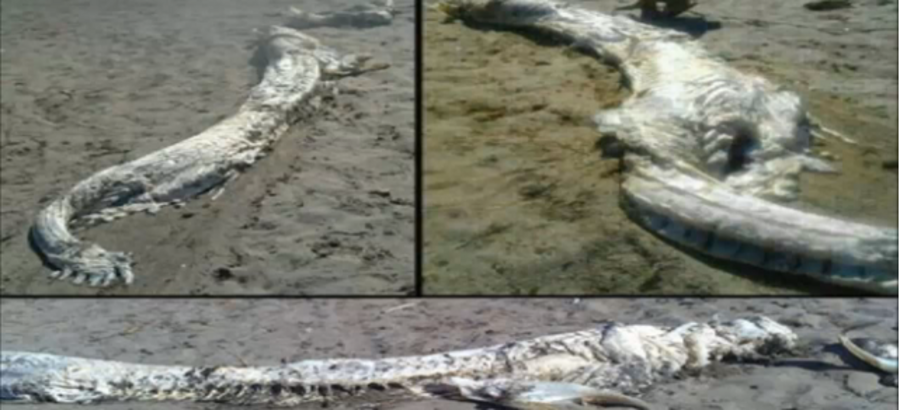Oarfish? Strange, Spanish fish carcass has been identified.
A fish carcass rotting on a Spanish beach has been identified as a deceased shark – not a washed-up oarfish, or a mutant animal, or a sea monster – according to an ichthyologist quoted by NBC News.
The remains of a long animal with barely-there flesh and scales, all tinged with a metallic sheen acquired from cooking in a beach’s hot, summer sand, were found last week on Luis Siret Beach in Villaricos, a coastal village in eastern Spain. Photos of the allegedly stinking fish were purveyed in the Spanish press and with them flurried speculation about the weird fish’s origins.
What was the strange, dead thing? Maybe it was a sea monster, wrested from its deep sea lair, some readers ventured on Twitter. Or maybe it was a mutant, the unfortunate lab product of a Frankenstein hermit fiddling with test tubes and beakers and DNA somewhere on the Spanish coast, probably in a castle lacking in light fixtures? Either way, the corpse made for good storytelling.
The best explanation, for a while, was that the deceased was an oarfish, an up-to-20-foot-long animal that inspired the tales sailors told on suspenseful nights about sea monsters biding their time in the black waters under their bumping and lurching ships. Earlier this summer, an ROV some 200 feet deep in the Gulf of Mexico filmed an oarfish doing a slow, underwater dance for the camera, like a blithe goddess with time to spare. Blue and glittering, the real-life fish did a convincing job at masquerading as something not quite of this world.
But now, Dean Grubbs, an ichthyologist at Florida State, has confirmed that the fish is not a sea monster, not a mutant, and not the hybrid of the two, the oarfish.
Instead, it is – or was – a shark, he said, presumably anti-climatically. In fact, in an unfortunate downgrade, the errant bones that looked like horns severed from a dethroned monster king have turned out to be pectoral bones from a shark’s behind.







